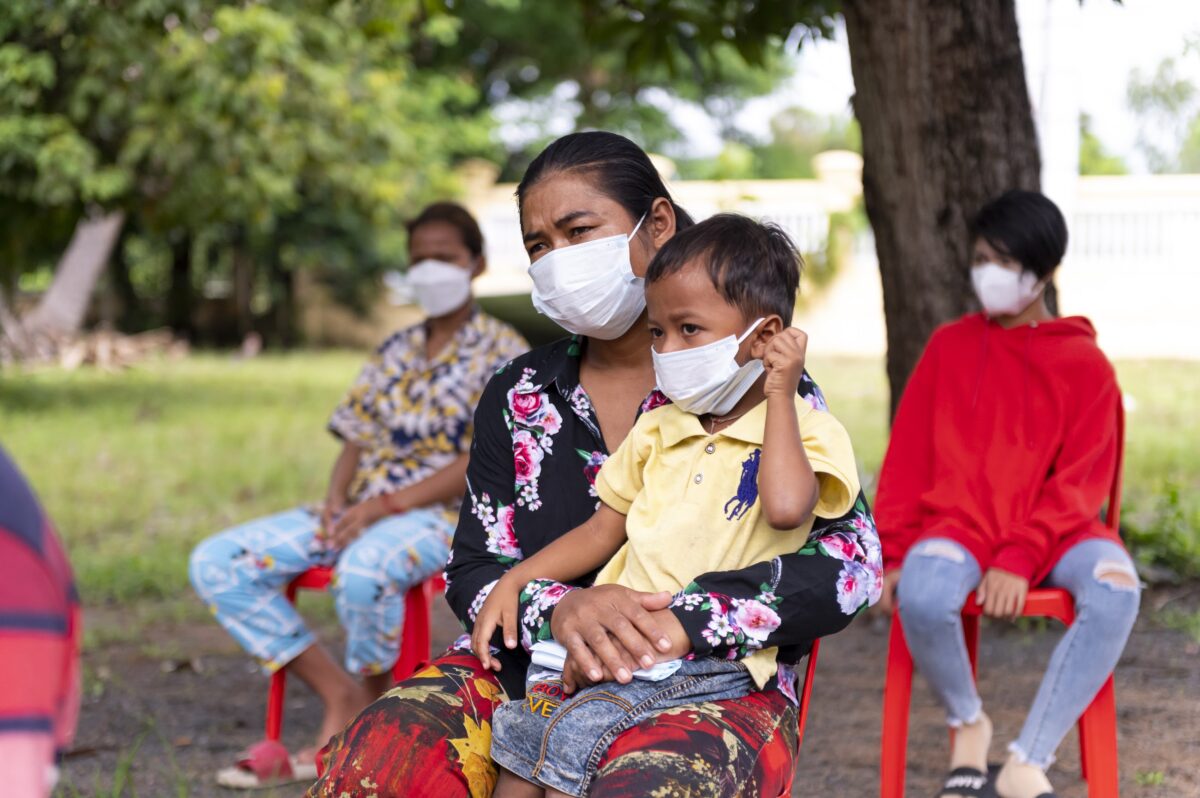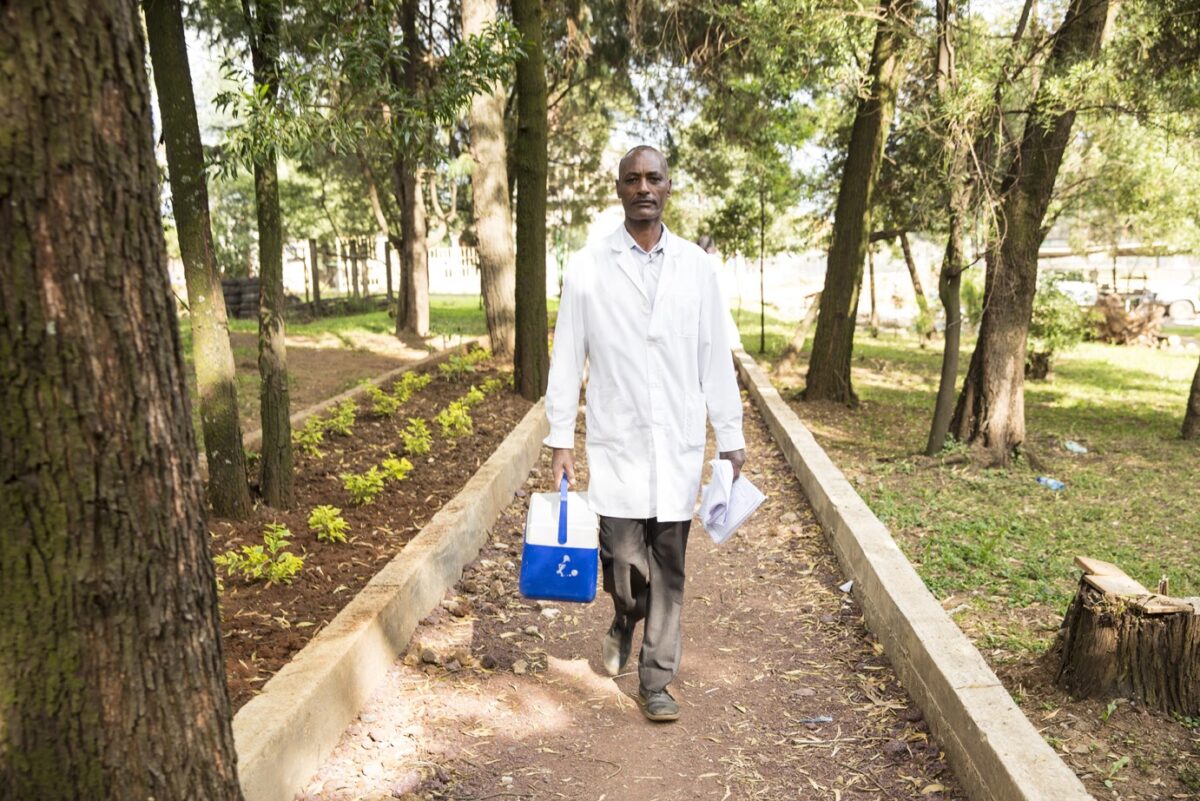We sought to investigate whether SARS-CoV-2 was present, and to perform full-length genomic sequencing, in a 5-year-old male crossbreed dog that presented with flu-like symptoms (including a dry hacking cough and mild dyspnea) and resided in a household with 3 adults that were diagnosed with SARS CoV-2 infection. Next generation sequencing based on MinION technology was performed on amplicons that were generated using a reverse transcriptase real-time polymerase chain reaction (RT-qPCR) of confirmed positive SARS-CoV-2 nasopharyngeal and buccal swabs, as well as a bronchoalveolar lavage with mean qCt value of 36 based on the Nucleocapsid gene. Descriptive comparisons to known sequences in Botswana and internationally were made using mutation profiling analysis and phylogenetic inferences based on maximum likelihood. Samples from the dog’s owners were not available. A near-full length SARS-CoV-2 genome (~90% coverage) was successfully genotyped and classified under clade 20 O and Pango-Lineage AY.43 (Pango v.4.0.6 PLEARN-v1.3; 2022-04-21), which is a sub-lineage of the Delta variant of concern (VOC) (formerly called B.1.617.2, first detected in India). We did not identify novel mutations that may be used to distinguish SARS-CoV-2 isolates from the dog and humans. In addition to S region mutation profiling, we performed phylogenetic analysis using Delta sequences from Botswana (n=1303); expectedly, the sequence isolated from the dog was closely related to the Delta sequences, particularly the AY.43, AY.116, and B.1.617.2 sub-lineages that were reported in Botswana within the same time frame. This is the first documented report of human-associated SARS-CoV-2 infection in a dog in Botswana. Although the direction of transmission remains unknown, this study further affirms the need for monitoring pets during different COVID-19 waves for possible clinically relevant SARS-CoV-2 transmissions between species.


